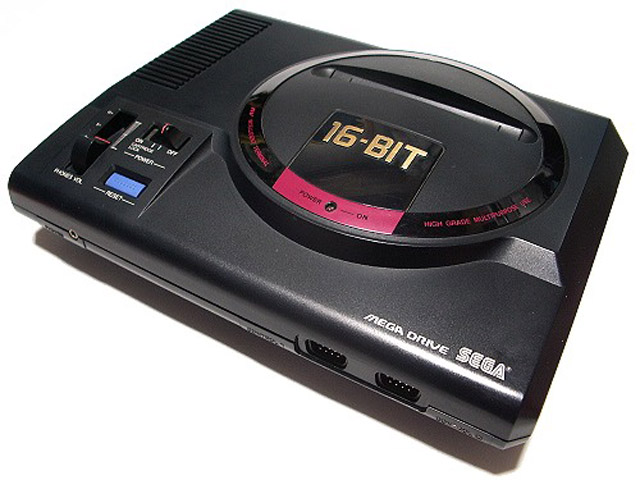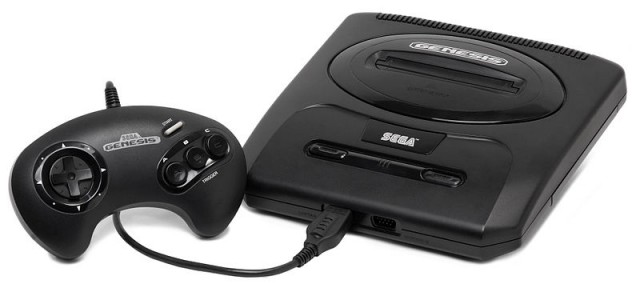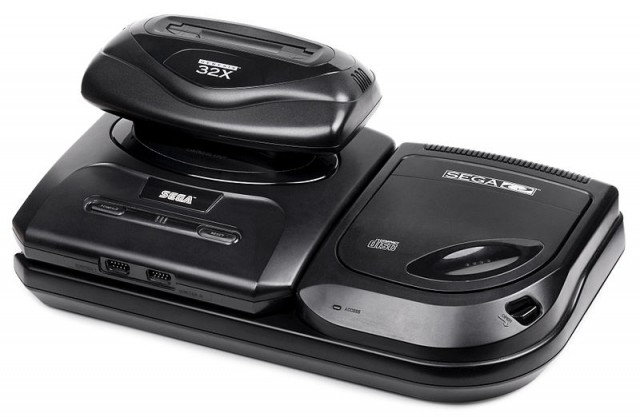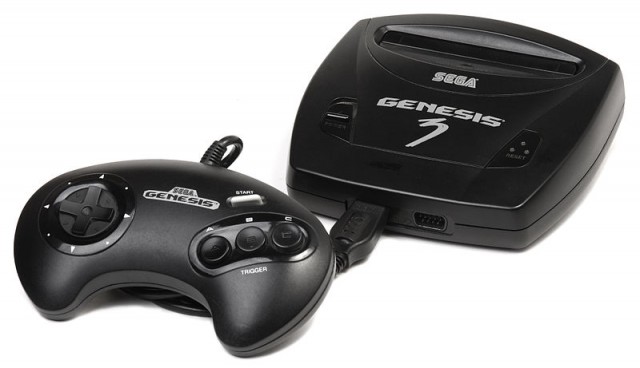
Yesterday we showed you some interesting evolutionary sketches and photos of the design of the Super Nintendo. Today we do the same for Sega’s Genesis, bringing you a few sketches and showing the revisions that the company went through just to keep up sales.
Without further ado…
The Sega Genesis
As the successor to the Master System, Sega created the Mega Drive, or what would come to be called the Genesis in the US. In Japan, it never really gained great market penetration, thanks to the strength of Nintendo’s Super Famicom (Super NES) and NEC’s PC Engine (TurboGrafx 16). In order for it to gain any marketshare, it needed a bold new design and features that would rival the Super Famicom. The initial design was reminiscent of the Master System, but featured slots for controller storage. It was known internally as the Mark V:

Image courtesy Sega Gaga Domain
Sega even examined an alternate controller design, which is eerily similar to today’s WiiMote & Nunchuk combo from Nintendo, that addressed those who didn’t feel comfortable with their hands cramped together on a gamepad:

Image courtesy gepachika.exblog.jp
Fearing that it may appear too similar to its Master System Sega went a different, more modern route. This direction was what became the base for the Mega Drive design. The company had master-planned several accessories to extend the use of the device from just a gaming system to a full home entertainment and computing machine, including modems, floppy- and CD-drives, and stereoscopic 3D:

Image courtesy Sega Gaga Domain
With the design finalized, Sega released the Mega Drive in Japan in 1988, touting 16-Bits as its key selling point over the Famicom. It featured a volume slider on the top and a plug for headphones on the front:

When the device came to the US just a year later, it featured some slightly modified graphics and logos, and the name changed to Sega Genesis. The console’s case stayed the same:

With the master-planning now beginning to take place, Sega released the Mega CD/Sega CD to the public. The giant device was released in 1991 in Japan and 1992 in the US:

A few years later, to combat the growing sales of the Super Famicom (and Super NES in the USA) Sega redesigned the Mega Drive/Genesis to be more compact, lighter, and cheaper to manufacture. The company also hoped that the redesign would spur new sales and, for a while at least, it did:

In April of 1992, Sega commissioned JVC to release a combination MegaDrive/Mega CD console, dubbed the WonderMega. The rather nice-looking device never made it to the US:

Soon after releasing the Sega 32X (as a poor man’s 32-bit upgrade), Sega created a new Sega CD to fit the Mega Drive 2/Genesis 2. The combined device, although having some nice product design elements, was all over the place:

JVC was allowed to make a second WonderMega device, specifically due to its licensing agreement with Sega for their audio chips. It was released in 1994 in the US as the JVC X’Eye at a whopping $499:

Image courtesy Ultimate Console Database
With the death of the Genesis becoming more apparent in the mid-90s, Sega released a combined Mega Drive/Sega CD console in 1994. In Japan it was known as the Multi-Mega, but in the US was named the Sega CDX. It incorporated an LCD on the front and functioned as a (somewhat) portable CD player:

Sega also looked to expand the Genesis to the portable market, which had lost the GameGear to Nintendo’s Gameboy. The release of the Nomad in 1995 was met with a large thump. While technically a full-fledged Genesis, bad battery life, size, and a fading market was a bane before it ever released, relegating it to an extremely niche group. Also, it was pretty freaking ugly:

Years after the Genesis had faded into relative obscurity and the Playstation and Nintendo 64 were on the market, Sega commissioned Majesco to manufacture and release the failed Genesis 3 in the US in 1997. The budget $50 console removed much of the add-on ports and, because of its diminutive size, was regularly weighed down by the much more massive (and older!) three-button controller:

With the Genesis dead, and modern consoles like the Xbox 360 and PS3 in full swing, Sega allowed ATGames to manufacture the Firecore in 2008, a tiny, tiny console that played most of the Genesis games but was devoid of expansion ports and incompatible with the add-on devices:

The Sega Genesis will always be remembered by some for the great Sonic and Phantasy Star games, Madden football, and NHL 95. For a few others it was a constantly evolving device, perpetually one step ahead and behind at the same time. Pour one out for Sonic‘s glory days.
Information and images via Wikipedia, Ultimate Console Database, Sega Gaga, gepachika.exblog.jp

3 Comments